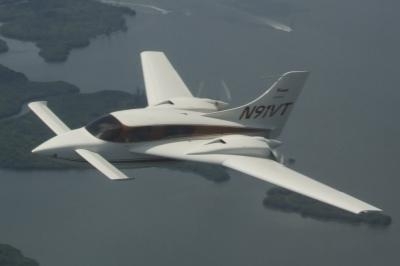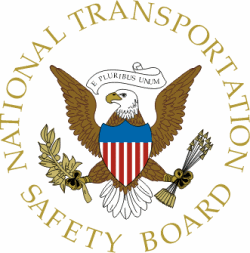Flight Followed Recent Propeller Replacement
The NTSB has released a preliminary report from an accident which occurred in Sebastian, FL, involving an experimental amateur-built Velocity Twin which went down on a flight following the replacement of one of the aircraft's propellers. The pilot, who was the sole occupant of the aircraft at the time of the accident, was not injured.

According to the report, on June 2, 2014, about 1700 eastern daylight time, the airplane was substantially damaged when it collided with the runway and terrain following a loss of control while landing at Sebastian Municipal Airport (X26), Sebastian, Florida. The private pilot/owner was not injured. Visual meteorological conditions prevailed, and no flight plan was filed for the local flight conducted under the provisions of Title 14 Code of Federal Regulations Part 91.
In a written statement, the pilot stated that he accompanied the chief pilot for the airplane kit manufacturer in his airplane for an "operational test" following the installation of an overhauled propeller on the number 1 (left) engine. The ground and flight tests were "normal" and the chief pilot deplaned before the pilot filled his airplane with fuel and departed by himself to perform three takeoffs and landings.
On the third takeoff, the pilot said the airplane "pulled" to the left and required "hard" right rudder to maintain runway alignment. About traffic pattern altitude, the pilot noted a 1,200 rpm difference between the left and right engine; 1,400 rpm on the left and 2,600 rpm on the right. Throughout the remainder of the traffic pattern the pilot attempted to troubleshoot and match the rpm on the two engines until he was on final approach to runway 10.
According to the pilot, "I cut the power over the numbers and floated awhile before hitting the runway, and the plane bounced up and then hit the runway a second time and bounced up again." The pilot elected to abort the landing and advanced both throttles; but the airplane yawed to the right, departed the runway, and collided with terrain.

In both a written statement and a telephone interview, a witness described an "unstable" approach before the airplane contacted the runway and "launched" back into the air. He described the right wing and the landing gear striking the ground twice before the airplane bounced back into the air. He said, "At this point he had a 40-45 degree nose-up attitude. He went to full power, but he was already stalled." The airplane struck the ground out of control and the landing gear and both propellers separated from the airplane.
The pilot held a private pilot certificate with ratings for airplane multiengine, single engine, and instrument airplane. His most recent FAA third class medical certificate was issued on May 14, 2013. He reported 1,500 total hours of flight experience of which 17 hours were in the accident airplane make and model.
According to FAA records, the airplane was manufactured in 2014. According to company records, its most recent conditional inspection was completed February 7, 2014. The airplane had accrued about 55 total hours of operation at the time of the accident.
At 0954, the weather conditions reported at Vero Beach, Florida, 11 miles southeast included a broken ceiling at 3,600 feet, visibility 10 miles, temperature 26 degrees C, dewpoint 19 degrees C, and an altimeter setting of 30.09 inches of mercury. The wind was from 080 degrees at 12 knots. According to the chief pilot, the Automated Surface Observing System (ASOS) at X26 reported winds from 100 degrees at 15 knots gusting to 19 knots just before the accident flight.
The wreckage was recovered from the accident site and moved into the aircraft kit manufacturer's facility where it was secured for examination at a later date. Examination of photographs revealed substantial damage to the fuselage, empennage, and tail sections.
(Image from file. Not accident airplane)
 ANN's Daily Aero-Term (05.29.25): Terminal Radar Service Area
ANN's Daily Aero-Term (05.29.25): Terminal Radar Service Area ANN's Daily Aero-Term (05.30.25): Very High Frequency (VHF)
ANN's Daily Aero-Term (05.30.25): Very High Frequency (VHF) Aero-News: Quote of the Day (05.30.25)
Aero-News: Quote of the Day (05.30.25) Airborne 05.23.25: Global 8000, Qatar B747 Accepted, Aviation Merit Badge
Airborne 05.23.25: Global 8000, Qatar B747 Accepted, Aviation Merit Badge ANN's Daily Aero-Linx (05.30.25)
ANN's Daily Aero-Linx (05.30.25)




